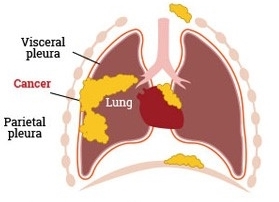Butchart Staging System
Posted on Thursday, April 7th, 2016 at 9:24 am
The Butchart staging system is the oldest method of staging pleural mesothelioma. Eric Butchart proposed the system in 1976. The Butchart system classifies tumors as stage I to stage IV, using the basic factors of the TNM and Brigham mesothelioma staging systems. The Butchart staging system’s main focus is determining the location of the primary tumor in the body at each stage.
The system was intended to help identify which patient needed radical treatment. Patients in stages I and II receive curative treatment while those in stages III and IV receive palliative treatment. This system may help doctors decide on the likely outcome of mesothelioma based on the stage the patient is in.
Butchart Staging Grouping
STAGE I
- Cancer is confined to the lung lining. The cancer has not spread to lymph nodes
STAGE II
- Cancer is in the lung lining and may have grown into the chest wall, esophagus, and heart
- Lymph node within the chest are cancerous
STAGE III
- Aggressive cancer in the lung lining has spread penetrating the diaphragm and entering the abdominal cavity. Cancer may be found in lymph nodes beyond or outside the chest

Butchart Staging System – STAGE IV
STAGE IV
- Cancer has spread to other parts of the body and/or organs by way of the blood stream.
This system was proposed before CT scans were in use. Other systems based on the Butchart system have been proposed over the years. One example is of Dr. Karin Mattson, who in 1982 developed a variation of the Butchart system which offered more concise and precise description of each stage in the system.
The Butchart staging system does not take into consideration the size of tumors, how many cancer cells are present and/or the level of cancer present in the whole body. Failure to add these factors may be viewed as the system’s shortcomings. This may also be the reason mesothelioma specialists favor the TNM and Brigham staging systems.
